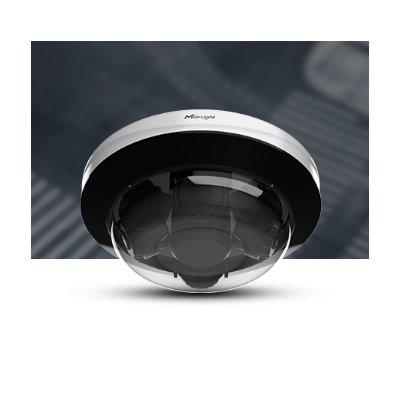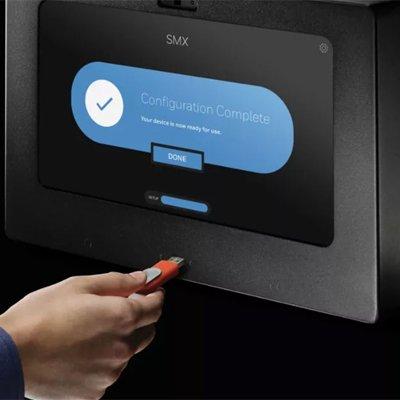One of the greatest challenges that indoor and outdoor security surveillance solutions face is lack of light. However, obtaining the proper amount of illumination for security goes beyond merely flooding a specific area with light.
Without an adequate lighting source, video cameras are ineffective. When capturing only dark, blurry images and video, they can quickly become worthless to security staff or law enforcement personnel. On the other hand, too much of the wrong type of light can create issues like ‘hot spots’ and overheating, which can diminish crucial details and eventually cause irreversible camera damage.
Fortunately, there has been a recent global shift that is sending users away from the old incandescent and fluorescent bulbs, and toward LED lighting. Regardless of the type of CCTV application, there are an abundance of reasons to stop using alternative types of illumination. Here are 3 of the most substantial.
1. Better illumination and clarity
You would think it would be common knowledge by now that cameras need light to see, and well-lit areas provide less cover for criminals to commit crimes. However, it is still somewhat commonplace to have sites where either not enough lighting or the wrong kind of lighting is implemented. Increasing the quality of illumination in an area has the ability to deter crime, make other accompanying safety devices perform better and even improve the accuracy of video analytics.
LED lamps are currently the |
Integrators need a lighting solution that consistently performs, and when it comes to supplying the best operation, price, and durability; external LED lighting is the only choice.
One particular aspect of external LED lighting that makes optimum illumination possible is the strategic uniformity of its design. External LED lamps are currently the only security lighting option that possesses a multitude of point sources, making it possible to literally aim your light by situating individual diodes in a specific angle or position. This type of alignment offers a more consistent and predictable light source than anything else on the market, eliminating much of the uncertainty involved in installation. This allows you to light a larger area more effectively and efficiently with nearly zero effort.
2. Faster start-up time
Whether you are talking about protecting a utilities facility, school campus or international border, it doesn’t take long for an incident to occur. Unlike traditional HID (high intensity discharge) lights, which can take up to a half an hour to reach full competency, LED’s spark up immediately. The colder the climate of the area, the more difficulty the HID bulbs have getting started and functioning properly. Given that there are many places in the United States alone where temperatures can sit at or below single digits, it seems almost absurd to consider anything else besides LED lighting. This sizable flaw can be especially detrimental if attempting to set up any kind of crime deterring, motion detection solution.
One of the most crucial components of a sufficient response system is reaction time. Having a sluggish start up regarding any component is much like having a 15 year-old guard dog laying in your yard. By the time the security lights get up and running, the offender has already committed the crime and vacated the premises. And as dependable as the old boy may have been in the years past, he is now just too darn slow. And with an industry that is quickly moving toward more effective real-time, situational security solutions, a hesitated response is the last thing desired.
 |
| Unlike traditional HID lights, which can take up to a half an hour to reach full competency, LED’s spark up immediately |
3. Increased life span and efficiency
Organisations have the opportunity to save thousands of dollars each year in energy costs, whilst increasing site security by switching to LED based illuminators. LED’s provide the lowest running cost currently available, with less than 100 watts needed for the most powerful of units. Not to mention, the majority of additional wattage needed for other types of lighting units is generally burned off in the form of unwanted heat, decreasing both quality and length of life. How much longer LED’s lasts when compared to the alternative is astounding. For example, the average life span of an incandescent bulb is about 1,000 hours; fluorescent bulbs last for around 10,000 hours, while LED’s can shine bright up an impressive 100,000 hours. That is 100 times longer without changing a bulb.
Furthermore, installing LED’s not only saves money in the form of lower energy and running costs, but also provides a very low rate of bulb malfunction or failure. This cuts down on maintenance fees as well as possible down time that could result in vulnerability. Inspections and servicing of lights alone can be very expensive and time consuming. LED’s radiate much less heat, reducing the chance of insect complications and helping prevent hot spot development, again saving you time, money and frustration at every camera site.
Enhancing overall security solution
As time goes on, the importance of strategic lighting becomes more and more evident for the security industry. The continual growth of technologically advanced video solutions (biometrics, crowd detection, motion tracking, etc.) demands a level of clarity and consistency that can only obtained through proper lighting. LED’s not only yield a lower running cost and better performance, they provide an enhanced level of control. The most important benefit of a security tool is not always how it performs independently, but how it increases the effectiveness of the overall security solution it is a part of.


















![[Download] The Evolution of Cards and Credentials in Physical Access](https://www.sourcesecurity.com/img/news/612/HID-whitepaper-Evolution of Cards and Credentials-920.jpg)





